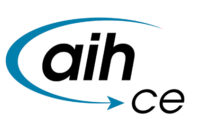The 26 and 27 October 2015 Fall American Industrial Hygiene Association (AIHA) Conference brought together a look at the future.
Included was the future of hiring industrial hygiene professionals with a comparison of the number of hygienists hired in the past 25 years.
Not surprisingly, the hiring of pure hygienists was shown by a recruiter of environmental, health, and safety professionalsto be lower each year over the past several years.
The future was the main topic of discussion among the general session speakers, including sensor technologies, the integration of the internet into collecting and responding to the abundance of data obtained from sensors in use inside and outside the workplace and even “smart” personal protective equipment. Businesses, and in-kind the various professionals in business including safety and industrial hygiene professionals will need to adapt to a “new style of computer”.[1]
Recognizing the future significance and importance of sensor technology to workplace safety and health, in 2014 NIOSH expanded upon an existing program to establish a Center for Direct Reading and Sensor Technologies.[2]
What do topics such as those addressed by conference which included mentioning of the Center for Brain, Minds and Machines, the Neural Information Processing System Symposium, or “Big Data” and Industrial Internet Technology have to do with safety and industrial hygiene?
How will this “internet of things” affect the industrial hygiene and safety professions?
Privacy violations, pay for privacy, levels of privacy, drivers for privacy, the right of privacy and ethics will certainly become issues as knowledge increases about the types of information and data collected and how it will be used in exposure assessments, medical surveillance, hazard identification and risk assessments.
Future data collected and analyzed will be abled by the connectivity of the internet with every day products, processes, or machines and equipment including transportation. According to the conference’s keynote speaker, novelist, journalist and futurist, Mr. Michael Rogers, insurance companies, not the government, will be the driving force for how risks are accepted within and outside the workplace.
Not many years ago, data logging capability was a new thing among noise measuring instruments. Now these instruments can determine and continuously log noise levels over any averaging period.
“Smart” textiles and “smart” PPE is being integrated into PPE for fire fighters and other first responders.[3]
In 2008 an EU conference developed a “technology roadmap for PPE”.[4]
The lead of smart technologies for injury prevention may be The Fire Protection Research Foundation, an arm of the National Fire Protection Association (NFPA) which has developed a research map for “smart firefighting” -- first responder smart technologies of the future to prevent injuries or illness while enhancing vital communication between first responders and building components and building systems, firefighting equipment and apparatus and related community infrastructure data systems.[5]
Two NFPA standards in this arena are NFPA 950-2015, Standard for Data Development and Exchange for the Fire Service[6] and the proposed standard NFPA 951, Guide for Building and Data Utilizing Digital Information.
New technology terminology is emerging. During NIOSH Director Dr. John Howard’s General Session, he touched upon the future of NIOSH research priorities while addressing such issues as robotic sensors, Industry 4.0 (the combination of industry and the “internet of things” called the fourth industrial revolution); “Big Data,” and data science;[7] the benefits and limits to “citizen science,” H.R.1030 – “Secret Science Reform Act of 2015;[8] epigenetics; and, social epidemiology.[9]
The future of safety and industrial hygiene is being determined by technological advances, in the internet of things and with the advent of “Big Data”. Future hygienists and safety professionals will be involved more in the interpretation of data and the whole profession will likely change, but what will remain the same is the need for saving resources while preventing illnesses and workplace injuries by preventing or minimizing the adverse effects from environmental and workplace hazards.
[1]MIT Technology Review, “Business Adapts to a New Style of Computer, Are companies ready for billions of everyday objects to join the Internet?” By Antonio Regalado, May 20, 2014 retrieved from: http://www.technologyreview.com/news/527356/business-adapts-to-a-new-style-of-computer/
[2] CDC/NIOSH Workplace Safety and Health Topics, “Direct Reading and Sensor Technologies” retrieved from: http://www.cdc.gov/niosh/topics/drst/
[3]European Commission Project co-funded by the European Commission within the Seventh Framework Programme, “Integrated ICT Solutions for Smart Personal Protective Equipment for Fire Fighters and First Responders” retrieved from: http://cordis.europa.eu/project/rcn/105991_en.html
[4]European Commission Engineering of Fibrous Smart Materials, “Personal Protective Equipment Conference, “Driving Innovation and Public Procurement in the European Lead Market” retrieved from: http://www.tencate.com/TenCate/Corporate/documents/brochures/Roadmap%20PPE%20v.1.9_lowres.pdf
[5] National Institute of Standards and Technology/National Fire Protection Research Foundation, “Developing a Research Roadmap for Smart Fire Fighting,” May 2015, retrieved from: http://www.nfpa.org/research/fire-protection-research-foundation/current-projects/developing-a-research-roadmap-for-the-smart-fire-fighter-of-the-future
[6]NFPA 950-2015: http://www.nfpa.org/codes-and-standards/document-information-pages?mode=code&code=950
[7] Harvard Business Review, “Data Scientist the Sexiest Job of the 21st Century,” by Thomas Davenport and D.J. Patil from the October 2012 issue retrieved from: https://hbr.org/2012/10/data-scientist-the-sexiest-job-of-the-21st-century/
[8]HR 1030 available at: https://www.congress.gov/bill/114th-congress/house-bill/1030
[9] National Library of Medicine, “Social epidemiology Definition, history and research examples” by Kaori Honjopublished Sept 2004 in Environmental Health and Preventive Medicine, abstract available at: http://www.ncbi.nlm.nih.gov/pmc/articles/PMC2723602/


